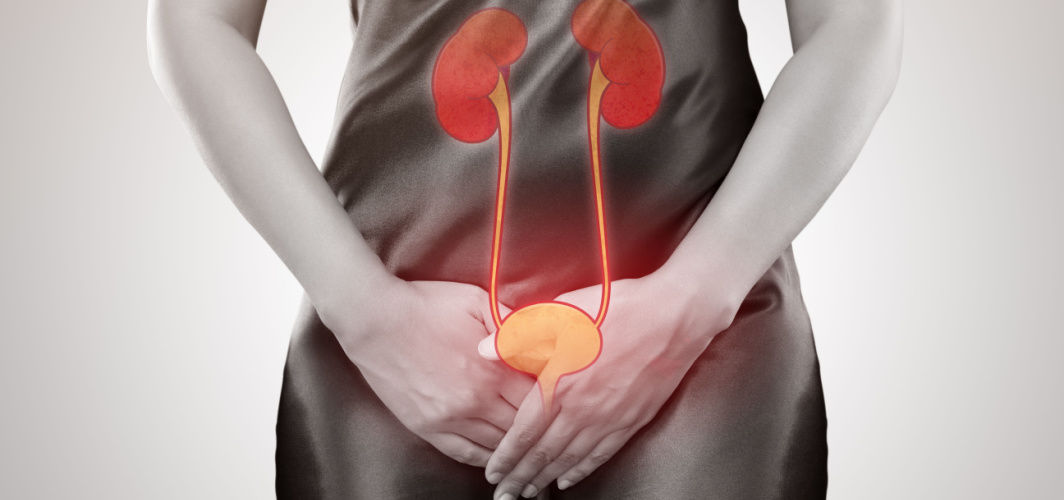General Health
Urine Infection: Symptoms, Cause, Diagnosis, Treatment, Prevention
7 min read
By Apollo Pharmacy, Published on - 24 August 2023, Updated on - 01 September 2023
Share this article
0
0 like

A urinary tract infection (UTI) is a common condition that affects the urinary system, which includes the kidneys, ureters, bladder and urethra. It occurs when bacteria enter the urinary tract and multiply, leading to an infection. UTIs are more prevalent in women due to their shorter urethra, which makes it easier for bacteria to reach the bladder. Understanding the symptoms of UTIs is crucial for early detection and treatment. If left untreated, UTIs can lead to more serious complications such as kidney infections.
Symptoms of Urinary Tract Infection
Urinary tract infections (UTIs) can cause a range of symptoms, depending on whether they affect the lower or upper urinary tract. Let's take a closer look at the common symptoms associated with UTIs:
1. Lower UTI Symptoms
- Burning sensation during urination: This is one of the most common symptoms and is often described as a stinging or burning feeling when passing urine.
- Frequent urge to urinate: One may feel like they need to urinate more than usual, even if only small amounts of urine are produced.
- Cloudy or strong-smelling urine: UTIs can affect changes in the appearance and odour of urine, generally making it cloudy or unusually pungent.
- Pelvic pain or discomfort: Some people may experience pain or discomfort in the lower abdomen or pelvic area.
2. Upper UTI Symptoms
- Fever and chills: If the infection spreads to the kidneys, it can lead to systemic symptoms such as fever and chills.
- Flank pain: Pain in the side or back, specifically in the area of the kidneys, is a common symptom of upper UTIs.
- Nausea and vomiting: In some cases, upper UTIs can cause nausea and vomiting.
Causes and Risk Factors
UTIs, or urine infections, are caused by bacteria getting into the urinary tract. The most common bacterial cause of UTIs is Escherichia coli (E. coli), which normally resides in the intestines but can enter the urinary tract. However, other bacteria can also cause UTIs.
1. Bacterial causes of UTIs
- Escherichia coli (E. coli) is the most common cause of UTIs. It accounts for approximately 80-90% of all cases.
- Other bacteria that can cause UTIs include Klebsiella pneumoniae, Proteus mirabilis, and Staphylococcus saprophyticus.
- These bacteria can enter the urinary tract through the urethra and travel up to the bladder, causing infection.
2. Risk factors for developing UTIs
- Female gender and anatomical factors: Women have a higher risk of developing UTIs due to shorter urethras, which allows bacteria easier access to the urinary tract.
- Sexual activity: Bacteria may be introduced into the urinary tract during intercourse, thereby increasing the chances of infection.
- Menopause and hormonal changes: The decrease in estrogen levels during menopause can lead to changes in the urinary tract, making it more susceptible to infections.
- Urinary catheter use: People on urinary catheters are at a higher risk of developing UTIs as catheters can introduce bacteria into a urinary tract.
- Diabetes and impaired immune system: Conditions that weaken the immune system, such as diabetes or certain medications, can increase the risk of UTIs.
Diagnosing Urinary Tract Infection
Self-diagnosis or ignoring the symptoms can give rise to complications and prolonged discomfort. Here are the key steps involved in diagnosing a UTI:
- Evaluation of symptoms and risk factors: Your healthcare provider will start by asking about your symptoms and medical history. Be prepared to discuss any recent changes in your urinary habits, such as increased frequency, pain or burning sensation while urinating, cloudy or foul-smelling urine
- Analysis of Urine Sample (Urinalysis): A urine sample will be collected and analyzed for infection indicators. This involves examining the urine under a microscope and testing it for the presence of any white blood cells, red blood cells, and bacteria. Urinalysis helps confirm the presence of an infection and provides valuable information about its severity.
- Urine culture to identify specific bacteria causing the infection: In some cases, a urine culture may be ordered to identify the specific bacteria. This helps determine the most appropriate antibiotic treatment.
- Imaging tests for recurrent or complicated cases: Recurrent or complicated UTIs may require additional imaging tests, such as an ultrasound, to evaluate the urinary tract for structural abnormalities or stones that could contribute to recurring infections.
Treatment Options for Urinary Tract Infection
Urinary Tract Infections (UTIs) are common and can cause discomfort and inconvenience. However, there are effective treatment options available to eliminate the infection and relieve symptoms. Let's explore some of these treatment approaches:
1. Antibiotics for Bacterial UTIs
Bacterial UTIs are the most common type and are treated with antibiotics. Some commonly prescribed antibiotics for UTIs include:
- Trimethoprim/sulfamethoxazole: This combination antibiotic is highly effective against a wide range of bacteria commonly responsible for UTIs.
- Nitrofurantoin: This antibiotic is often prescribed for uncomplicated UTIs and is particularly effective against bacteria in the urinary tract.
- Ceftriaxone: In severe cases or when other antibiotics are not effective, intravenous ceftriaxone may be administered.
It is essential to complete the full course of antibiotics prescribed by your doctor to ensure that the infection is completely eradicated.
2. Pain Relief and Symptom Management
Along with antibiotics, pain relief and symptom management play a crucial role in UTI treatment. Here are some options:
- Pain relievers: Nonsteroidal anti-inflammatory drugs (NSAIDs) such as ibuprofen can help alleviate pain and reduce inflammation associated with UTIs.
- Urinary analgesics: These medications provide relief from discomfort during urination by numbing the urinary tract. However, they should be used under medical supervision for short-term relief.
Prevention Strategies for Urinary Tract Infection
While the above-mentioned treatment options effectively manage UTIs, prevention is equally vital. There are several strategies you can follow to help reduce the risk of developing UTIs:
1. Hygiene Practices
- Proper genital hygiene: Wiping from the front to the back after using the restroom helps prevent bacteria from the anal area from spreading to the urethra and causing an infection.
- Urinating before & after sexual activity: This helps to flush out any bacteria that may have entered the urethra during intercourse.
- Avoiding irritating feminine products and perfumed soaps: These products disrupt the natural balance of bacteria in the urinary tract.
2. Lifestyle Changes
- Staying hydrated and drinking cranberry juice: Cranberry juice contains compounds that can prevent bacteria from adhering to the walls of the urinary tract, making it harder for them to cause an infection.
- Promoting regular bowel movements: Constipation can increase the risk of developing UTIs by allowing bacteria to migrate from the intestines to the urinary tract. Therefore, one must consume fibrous foods and probiotics to ensure regular bowel movements.
3. Dietary Recommendations
- Foods and supplements: Consuming foods and supplements that support a healthy urinary tract, such as probiotics, can be beneficial. Probiotics are beneficial bacteria that help maintain a healthy balance of microorganisms in the body, including the urinary tract.
- Limiting consumption of irritants: It is advisable to limit consumption of irritants like caffeine and alcohol, as they can irritate the bladder and increase the risk of UTIs.
Conclusion
UTIs or urine infections are common conditions that can cause discomfort and inconvenience. Seeking medical advice for proper diagnosis and treatment is crucial. By following preventive measures, such as staying hydrated and maintaining good hygiene practices you can significantly reduce your risk of developing urinary tract infections.
To prevent UTIs,
FAQs
Q. Can I get a UTI from holding in urine for too long?
Holding in urine for extended periods can increase the risk of UTIs. When urine stays in the bladder for too long, bacteria can multiply and cause an infection. It is important to empty your bladder regularly to maintain urinary tract health.
Q. Are UTIs more common in women than men?
Yes, UTIs are more common in women. This is due to their shorter urethra, which allows bacteria to reach the bladder more easily. Hormonal changes during pregnancy and menopause also contribute to increased susceptibility in women.
Q. Can I prevent UTIs by drinking cranberry juice?
Although cranberry juice may reduce the risk of recurrent UTIs in some individuals, it is not a foolproof method and should not replace other prevention strategies.
Q. Can sexual activity cause UTIs?
Sexual activity can increase the risk of UTIs, especially in women. This is because sexual intercourse can introduce bacteria into the urethra and subsequently the bladder.
Q. Are there any lifestyle factors that increase the risk of UTIs?
Certain lifestyle factors that can contribute to an increased risk of UTI include poor personal hygiene, using irritating feminine products, not drinking enough water, and holding in urine for too long.
Medically reviewed by Dr Sonia Bhatt.
General Health
Consult Top Urologists
View AllLeave Comment
Recommended for you

General Health
Is Fish Oil Safe for Older Adults and Children?
Explore the safety of fish oil for older adults and children. Get expert insights to make informed decisions about its use.

General Health
7 Common Eye Diseases, Types, Causes & Symptoms
Learn about common eye diseases, their types, causes, and symptoms. Find out how you can protect your vision and maintain good eye health.

General Health
Why Are Carbonated Beverages The Ultimate Health Villain? 5 Reasons Decoded
Excessive cola or soda consumption has been linked to diabetes, heart diseases, and weight gain. This article explains why drinking soda can be dangerous for you.
Subscribe
Sign up for our free Health Library Daily Newsletter
Get doctor-approved health tips, news, and more.
Visual Stories

Plant-based Foods That Are a Great Source of Iron
Tap to continue exploring
Recommended for you

General Health
Is Fish Oil Safe for Older Adults and Children?
Explore the safety of fish oil for older adults and children. Get expert insights to make informed decisions about its use.

General Health
7 Common Eye Diseases, Types, Causes & Symptoms
Learn about common eye diseases, their types, causes, and symptoms. Find out how you can protect your vision and maintain good eye health.

General Health
Why Are Carbonated Beverages The Ultimate Health Villain? 5 Reasons Decoded
Excessive cola or soda consumption has been linked to diabetes, heart diseases, and weight gain. This article explains why drinking soda can be dangerous for you.